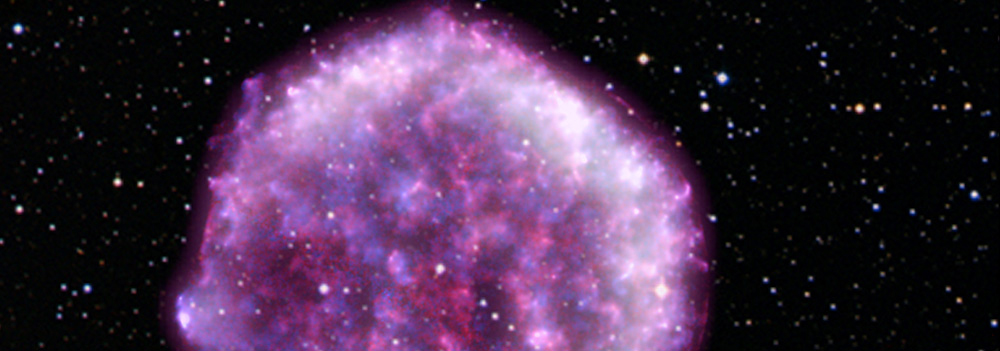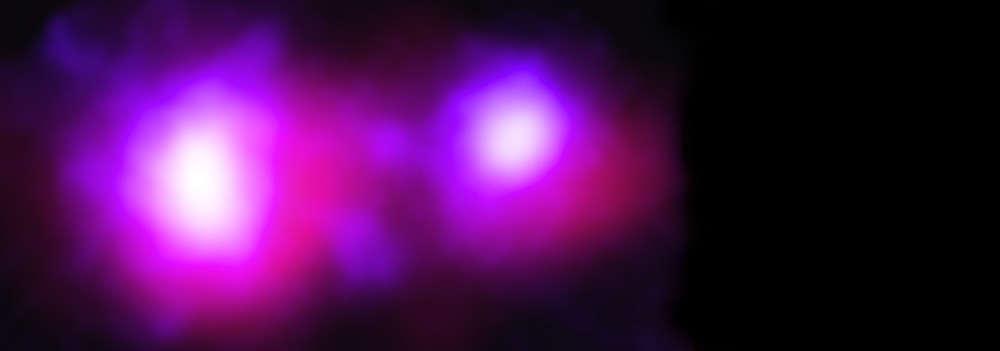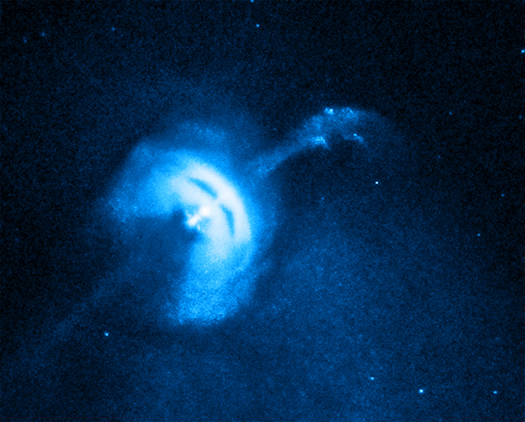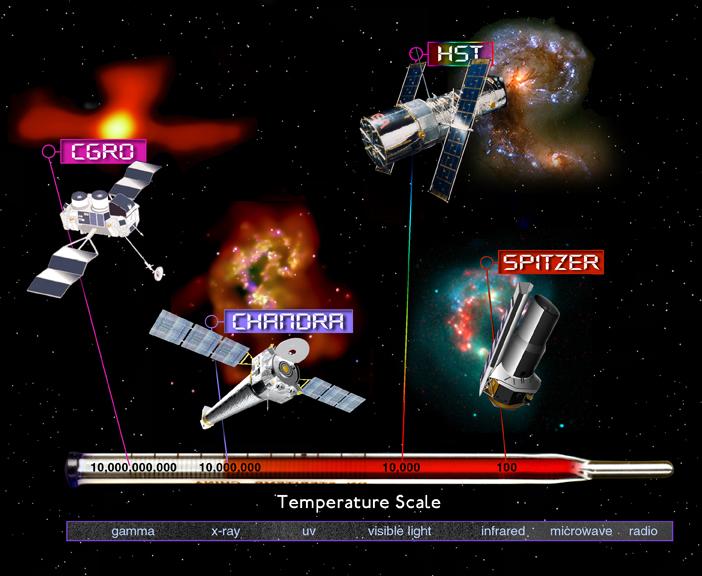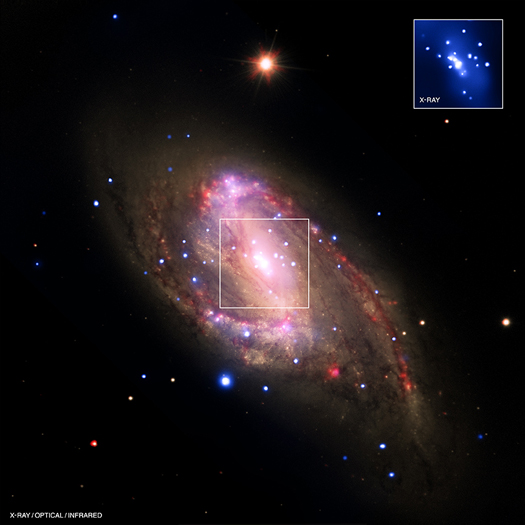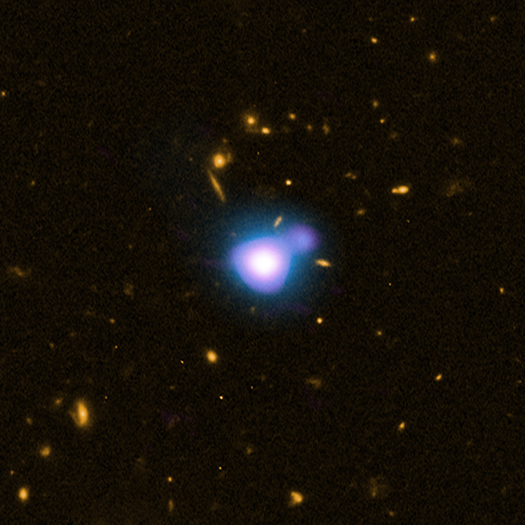Never give up and trust your intuition
Submitted by chandra on Tue, 2012-12-18 11:59We are very pleased to welcome a guest blogger, Julie Hlavacek-Larrondo, who led the work described in our latest press release. Julie was raised in Montreal, Canada, and in 2007 completed a Bachelor’s degree in physics at the University of Montreal. Julie then obtained a Master’s degree in astrophysics. In 2012, she completed a PhD at the University of Cambridge. She is currently an Einstein Fellow at Stanford University.
It was during my Master degree at the University of Montreal that I realized just how fascinating black holes are.
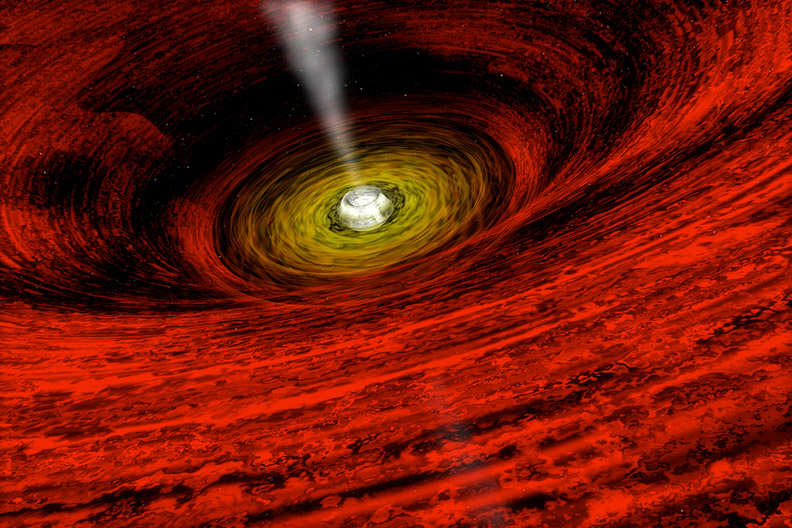
I remember stumbling upon a press release from Chandra in 2007. The Chandra space telescope revealed an image of a jet, powered by a supermassive black hole, blasting through its neighboring galaxy. What's so fascinating? Supermassive black holes are tiny objects, about a billion times smaller than the galaxy it resides in, yet, it can create jets that extend well beyond the size of the galaxy! How can something so small be so powerful?
From Super to Ultra: Just How Big Can Black Holes Get?
Submitted by chandra on Tue, 2012-12-18 11:50The black hole at the center of this galaxy is part of a survey of 18 of the biggest black holes in the universe. This large elliptical galaxy is in the center of the galaxy cluster PKS 0745-19, which is located about 1.3 billion light years from Earth. X-ray data from NASA's Chandra X-ray Observatory are shown in purple and optical data from the Hubble Space Telescope are in yellow.
Chandra in 2012: A Teenager in Space
Submitted by chandra on Fri, 2012-12-14 13:46In July of 2012, Chandra completed its 13th year of operation, making it a teenager. That is young in human terms, but it is getting up there for an automobile, and could be considered a "senior citizen" for a spacecraft of Chandra's complexity. How many computers do you have that are 13 years old? Chandra's magnificent sister NASA flagship observatory, Hubble, is older, at 22, but astronauts have paid 4 house calls to make major upgrades over the years.
Understanding What's Out There by Looking Down Here
Submitted by chandra on Thu, 2012-12-13 10:40As we've talked about before, science doesn't recognize boundaries. (In fact, we've created the Here, There, Everywhere project to explore this very idea.) Often, scientists need to do experiments here on Earth to better understand what's happening billions of miles away across the Universe.
Revealing Hidden Black Holes
Submitted by chandra on Thu, 2012-12-13 10:39The spiral galaxy NGC 3627 is located about 30 million light years from Earth. This composite image includes X-ray data from NASA's Chandra X-ray Observatory (blue), infrared data from the Spitzer Space Telescope (red), and optical data from the Hubble Space Telescope and the Very Large Telescope (yellow). The inset shows the central region, which contains a bright X-ray source that is likely powered by material falling onto a supermassive black hole.
Searching for the Best Black Hole Recipe
Submitted by chandra on Thu, 2012-12-06 09:29In this holiday season of home cooking and carefully-honed recipes, some astronomers are asking: what is the best mix of ingredients for stars to make the largest number of plump black holes?
They are tackling this problem by studying the number of black holes in galaxies with different compositions. One of these galaxies, the ring galaxy NGC 922, is seen in this composite image containing X-rays from NASA's Chandra X-ray Observatory (red) and optical data from the Hubble Space Telescope (appearing as pink, yellow and blue).
From the Chalkboard to the Diving Board
Submitted by chandra on Tue, 2012-12-04 10:06Stacie Powell is currently a Ph.D. student in astrophysics at Institute of Astronomy at the University of Cambridge, England. She also took a break this past summer to compete in the 10-meter diving platform competition for Great Britain at the 2012 Olympic Games in London. Stacie took some time from her busy schedule to discuss her academic and career path thus far.
I have always had a very questioning mind and liked to learn how the physical processes and objects we see around us can be explained so simply by mathematics. The biggest question in life -- "How did we get here?" -- has always intrigued me. I find astronomy very rewarding as it provides small clues, which are beginning to be pieced together and help us answer this question and, ultimately, to understand the Universe we live in.
How to stumble into a PhD project, and how it can follow you
Submitted by chandra on Wed, 2012-11-28 11:06
Teddy Cheung, Credit: Craig Walker
We are delighted to welcome Teddy Cheung, from the National Academy of Sciences, and resident at the Naval Research Laboratory in Washington DC, to give a guest blog post today. Teddy is first author of a paper describing the discovery of the most distant X-ray jet detected to date. Here, he explains some of the background story behind this discovery.
When I started graduate school in 1999 at Brandeis University, exciting discoveries were being made down the road in Cambridge, Massachusetts, with the then newly launched Chandra X-ray Observatory. The first Chandra image unexpectedly revealed a bright X-ray jet from a distant quasar (http://chandra.harvard.edu/press/99_releases/press_082399.html) and the research groups at SAO and MIT were puzzling over it. But it took me leaving Boston to find my eventual connection.
I spent the summer of 2000 at the Space Telescope Science Institute in Baltimore, Maryland, wanting to learn something entirely new and took on a project in Meg Urry's group studying the galaxies of BL Lac objects (a type of cousin to the quasars) using ground-based near-infrared data. Coincidentally, I shared an office with another graduate student working with Dr. Urry for the summer, Fabrizio Tavecchio from Italy, and they were at that time puzzling over the same Chandra jet detection. Little did I appreciate at the time, that this visit to Baltimore would lead back to my eventual PhD project at Brandeis on the Chandra quasar jets.
Record-Setting X-ray Jet Discovered
Submitted by chandra on Wed, 2012-11-28 10:45This composite image shows the most distant X-ray jet ever observed. X-ray data from NASA's Chandra X-ray Observatory are shown in blue, radio data from the NSF's Very Large Array are shown in purple and optical data from NASA's Hubble Space Telescope are shown in yellow. The jet was produced by a quasar named GB 1428+4217, or GB 1428 for short, and is located 12.4 billion light years from Earth. Labels for the quasar and jet can be seen by mousing over the image. The shape of the jet is very similar in the X-ray and radio data.
Pages
Please note this is a moderated blog. No pornography, spam, profanity or discriminatory remarks are allowed. No personal attacks are allowed. Users should stay on topic to keep it relevant for the readers.
Read the privacy statement


